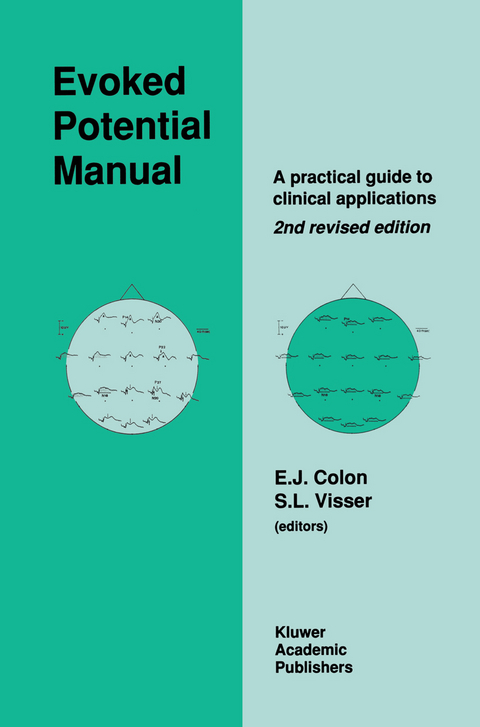
Evoked Potential Manual
Springer (Verlag)
978-0-7923-0791-4 (ISBN)
Evoked potentials are potentials that are derived from the peripheral or central nervous system. They are time locked with an external stimulus and can be influenced by subjective intentions. Evoked potentials have become increasingly popular for clinical diagnosis over the last few years. Evoked potentials from the visual system are used by ophthalmologists in order to localize the abnormalities in the visual pathway. The otologists are mainly involved in brainstem auditory evoked potentials, while the pediatricians, neonatologists, neurologists and clinical neurophysiologists make use of multimodal stimulation. The psychiatrists and psychologists, generally, examine the slow potentials such as P300 and CNV. Anesthesiologists use short latency somatosensory and visual evoked potentials in order to monitor the effectiveness of the anesthesia. Pharmaco evoked potentials are very promising measures for the quan tification of the effectiveness of drug action on the cerebral cortex. Urologists are more and more involved in pudendal somatosensory evoked potentials and in the intensive care unit evoked potentials are used in order to monitor the functional state of the central nervous system of the patient. This overwhelming number of examinations and exam ina tors clearly demonstrates the need for guidelines and standardization of the methods used. The evoked potential metholody is restricted by the relative poor signal to noise ratio. In many diseases this signal to noise ratio decrease rapidly during the progression of the illness. Optimal technical equipment and methodology are therefore essential.
One: Technical Aspects.- Technical and methodological considerations on the measurement of evoked potentials.- Two: Auditory Evoked Potentials.- The auditory brainstem response.- Middle and long latency auditory evoked potentials.- Three: Visual Evoked Potentials.- Electrodiagnosis by luminance and pattern stimulation.- Visual evoked potentials in clinical neurology.- Four: Somatosensory Evoked Potentials.- to SSEP.- Short latency somatosensory evoked potentials.- Long latency somatosensory evoked potentials.- Case histories of short latency and long latency somatosensory evoked potentials.- Transcranial and transcord stimulation.- Five: Event Related Evoked Potentials.- An introduction to methodology, psychophysiological significance and clinical applications.- Index of subjects.
| Erscheint lt. Verlag | 31.10.1990 |
|---|---|
| Zusatzinfo | X, 358 p. |
| Verlagsort | Dordrecht |
| Sprache | englisch |
| Maße | 156 x 234 mm |
| Themenwelt | Medizin / Pharmazie ► Medizinische Fachgebiete ► Augenheilkunde |
| Medizin / Pharmazie ► Medizinische Fachgebiete ► Neurologie | |
| Naturwissenschaften ► Biologie ► Humanbiologie | |
| ISBN-10 | 0-7923-0791-7 / 0792307917 |
| ISBN-13 | 978-0-7923-0791-4 / 9780792307914 |
| Zustand | Neuware |
| Haben Sie eine Frage zum Produkt? |
aus dem Bereich


